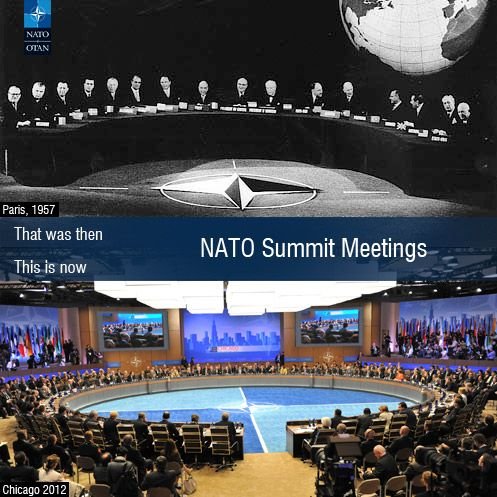Introduction: A Critical Diplomatic Mission
Ukrainian President Volodymyr Zelenskyy arrived at the NATO Summit in The Hague with a clear and urgent agenda: to secure stronger and more enduring support from Western allies as Ukraine’s war with Russia continues into its third year. With the conflict grinding on and global attention shifting to other geopolitical crises, Zelenskyy knew the importance of reminding NATO leaders that Ukraine remains a frontline defense for European security. The summit was not just about military aid—it was about long-term partnerships, deeper integration, and recognition of Ukraine’s pivotal role.
A Shift in Strategy: From Battlefield to Diplomacy
In a symbolic gesture of strategic repositioning, Zelenskyy abandoned his usual military fatigues and appeared in a formal suit, projecting an image of a wartime leader ready to embrace diplomacy. This visual transformation was no accident—it signaled a shift from resistance to resilience, from emergency defense to long-term alignment. Zelenskyy was not only lobbying for tanks, missiles, and financial support but also for a seat at the table where decisions about Europe’s future are made.
Ukraine’s Key Demands at the Summit
At the core of Zelenskyy’s address to NATO leaders were three primary demands: continued and expanded military support, long-term security guarantees, and a clear pathway toward NATO membership. While immediate battlefield supplies such as air defense systems, ammunition, and missile batteries were essential, Zelenskyy also focused heavily on institutional integration. He stressed the need for NATO to formally commit to Ukraine’s eventual inclusion in the alliance.
Additionally, he proposed a dedicated economic and military aid fund, suggesting that NATO countries allocate a fixed portion of their GDP—such as 0.25%—to help Ukraine rebuild and fortify its defense industry. This would not only sustain Ukraine’s fight but also ensure it becomes a self-reliant security partner capable of contributing to regional stability.
Defense Manufacturing Partnerships: Building with Ukraine
A major theme in Zelenskyy’s appeal was the emphasis on defense co-production. Rather than simply requesting equipment, he urged NATO allies to invest in joint manufacturing ventures with Ukraine. He highlighted the rapid expansion of Ukraine’s drone and missile production capacity and invited Western companies to establish production facilities in Ukrainian territory. This would allow Ukraine to become a hub for modern weapons systems in Eastern Europe, reducing dependence on external supply chains and creating new economic opportunities.
Such partnerships would also ensure that Ukraine’s military becomes more compatible with NATO standards—a crucial step for deeper integration.
A Pivotal Meeting with Donald Trump
One of the most watched moments of the summit was Zelenskyy’s closed-door meeting with former U.S. President Donald Trump. Despite their historically complicated relationship, the two leaders reportedly held a lengthy and constructive discussion. Topics included prospects for peace, the nature of continued U.S. military aid, and how to protect civilian populations from Russian attacks.
Zelenskyy took this opportunity to directly communicate Ukraine’s strategic needs and future vision. In return, Trump expressed interest in facilitating a peace deal while also recognizing the importance of missile defense systems like the Patriot in Ukraine’s arsenal. The meeting was seen as a calculated move by Zelenskyy to hedge his bets in an uncertain U.S. political landscape, especially with the upcoming 2024 presidential election looming large.
The NATO Response: Cautious Optimism
While many NATO leaders expressed continued support for Ukraine, the alliance’s overall stance remained cautious. Some member states, especially in Western Europe, pushed back against aggressive timelines for Ukrainian accession. They argued that granting full membership while the war is ongoing could risk drawing NATO directly into conflict with Russia.
Nevertheless, a growing consensus emerged around the idea of offering Ukraine expanded security guarantees—short of full membership—including advanced training, intelligence sharing, and long-term arms support. Some countries also pledged to provide more anti-aircraft systems, artillery, and financial assistance for rebuilding destroyed infrastructure.
Rising Defense Budgets Across NATO
A major decision that emerged from the summit was the agreement to raise NATO member defense spending. For years, the alliance had struggled to get countries to meet the 2% GDP target. However, amid rising global tensions, a new threshold of 5% by 2035 was proposed and endorsed by several key nations.
Zelenskyy seized on this momentum to argue that supporting Ukraine should be considered part of this increased investment. In his view, helping Ukraine defeat Russian aggression now is a preemptive act that strengthens the entire alliance and deters future threats.
Opposition and Internal Divisions
Despite general alignment on Ukraine’s importance, some divisions were apparent among NATO members. Countries with smaller economies raised concerns about the feasibility of hitting the 5% defense budget target, and some voiced reservations about escalating commitments to Ukraine.
There was also underlying concern over how far NATO should go in confronting Russia. While the alliance has repeatedly stated its support for Ukraine’s sovereignty and territorial integrity, there is still wariness about provoking direct confrontation with Moscow. Zelenskyy, however, dismissed these fears, arguing that passivity only emboldens aggression.
The Broader Message: Ukraine as a Future Security Partner
Throughout his engagements, Zelenskyy worked to reframe Ukraine not as a charity case but as a future net contributor to European security. He emphasized the professionalism of the Ukrainian armed forces, their battlefield experience, and the integration of modern technology into their operations.
By presenting Ukraine as a mature, capable, and reform-oriented democracy, Zelenskyy appealed to NATO’s long-term interests. His message was clear: Supporting Ukraine is not just the right thing to do—it’s a smart strategic investment in the stability and security of the entire region.
Public Relations and Image Strategy
Zelenskyy’s appearance and messaging were carefully crafted for both international audiences and his own population. Dressed sharply, speaking with controlled urgency, and delivering clear and emotionally resonant messages, he projected a calm but determined image.
This rebranding from frontline commander to statesman aimed to instill confidence among Western leaders and to show Ukrainians that their country is being recognized at the highest levels of global diplomacy. The transformation may also be part of a broader political strategy, setting the stage for future elections and post-war governance.
Looking Ahead: What Comes Next?
The summit ended without dramatic declarations but with subtle and significant shifts. NATO countries signaled stronger alignment on increasing defense budgets and deepening cooperation with Ukraine. While the path to full NATO membership remains uncertain, the direction is clear: Ukraine is gradually becoming a part of NATO’s defense framework, even if formal accession is still some distance away.
For Ukraine, the next steps include finalizing co-production agreements, securing promised military aid, and continuing to modernize its armed forces. Diplomatic efforts will likely continue behind the scenes, with Zelenskyy visiting other European capitals and maintaining communication with both current and potential U.S. leaders.
Conclusion: A Statesman’s Summit
Volodymyr Zelenskyy’s participation in the NATO Summit marked a key turning point in Ukraine’s wartime diplomacy. No longer just a symbol of resistance, Zelenskyy emerged as a strategic leader advocating for his country’s role in the future security architecture of Europe.
Through high-stakes diplomacy, clear messaging, and long-term vision, he reminded NATO that the outcome of the war in Ukraine will shape the fate of the Western world. By blending urgency with pragmatism, and military needs with institutional ambitions, Zelenskyy showed he is not only leading a nation in crisis—but one with its eyes firmly set on victory, recovery, and a lasting place among the defenders of global freedom.


